
Each of us produces a staggering amount of plastic waste...
Plastic is everywhere in our daily life.
We use and throw away so much waste that there will soon be more plastic than fish in the oceans...
Think it's hard to live without plastic?
Well, know that there are easy tips to drastically reduce your consumption of plastic .

Thanks to these simple and practical alternatives, you too can do your part to reduce the tons of plastic waste dumped in the oceans!
As you will see, all it takes is a little preparation and creativity.
Here are 28 ultra-easy tips to help you live plastic-free every day :

Removing plastic from your daily life altogether would be impossible .
So take a step-by-step approach instead. . Otherwise, you will quickly become discouraged, and more likely to abandon your positive approach.
The best way is to reduce your consumption, at your own pace and in your own way.
Eliminate your plastics little by little , taking the time to find them sustainable and intelligent replacements .
Don't put pressure on yourself! :-) In the beginning, adopt the tricks you prefer!
The first step is to avoid single-use plastics as much as possible. .
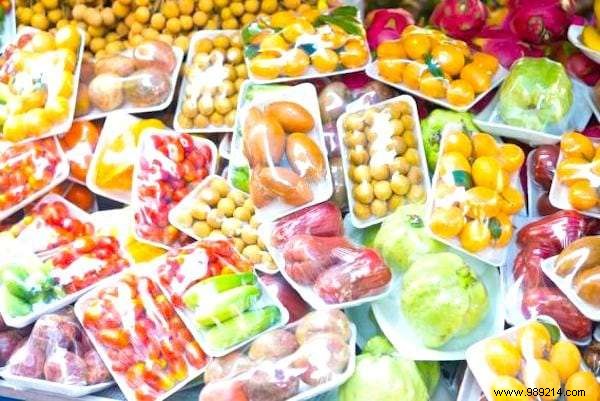
Plastic packaging accounts for nearly 35% of our plastic consumption ...
When you know that 80% of this plastic packaging is just used once before being thrown away, it sends shivers down your spine!
In addition, only 25% of plastic packaging is recycled...
Among all the unnecessary packaging, the palm certainly goes to fruits and vegetables in plastic packaging...
Instead, choose foods without packaging and carry them in reusable bags.
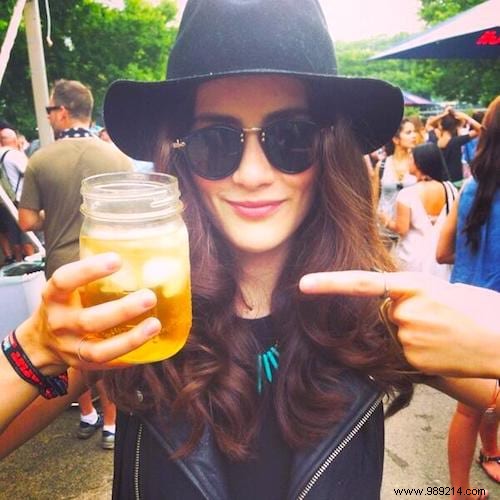
Say no to plastic! It's the very first and easiest thing to do to live without plastic.
To start, refuse all the unnecessary plastics frequently imposed by businesses.
Some examples of these useless single-use plastics:
- plastic glasses
- lids for cups,
- straws for drinks,
- take-out boxes and
- plastic cutlery.
To discover: I Have Produced NO WASTE For 2 Years. This Is What My Life Looks Like.

And while you're at it, stop using plastic bags when you go shopping!
Indeed, plastic bottles and bags are really 100% useless … and easily replaceable!
Want to know how to replace them? Don't panic!
A little further down in the article, we explain the simple and practical alternatives to eliminate these two ecological disasters from your life :-)
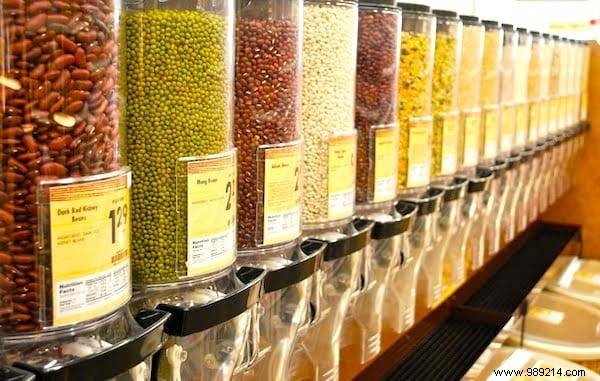
Buying your food in bulk means less packaging, which is obviously better for the planet.
And very often, bulk food are much cheaper than packaged foods.
As a result, you also save more money on your budget.
In addition, it also means less waste, because by buying your food in bulk, you take exactly the quantity you need.
To discover: Buying in Bulk, A Virtuous Gesture for the Wallet (and the Planet).
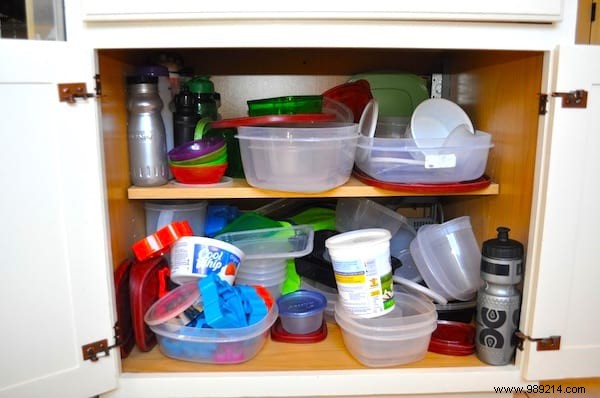
After eliminating single-use plastics, move on to the second step…
Gradually eliminate all other plastic objects from your daily life.
Not so long ago, our ancestors didn't use ANY plastic objects!
Indeed, it's been less than 100 years that man makes plastic objects.
This means that living without plastic is entirely possible . We simply have to find sustainable and non-polluting alternatives.
The good news is that replacing plastic items is a lot easier than it looks.
Here are lots of good solutions to replace plastic objects in your daily life:
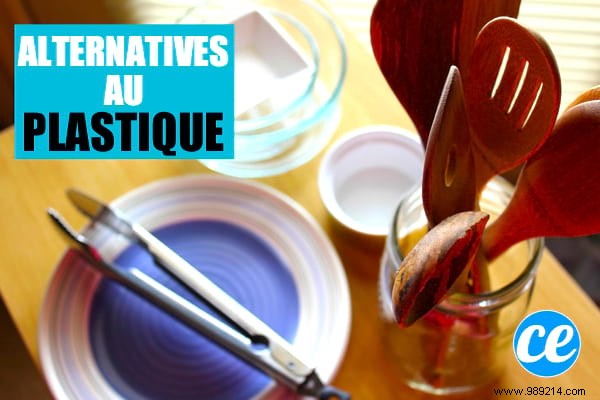
These materials are particularly ideal for preserving food .
By the way, did you know that most plastic containers contain chemicals that leach into your food?
This is also true for plastic water bottles which can be dangerous to health. Read our article on the subject.

Bottles, food containers, Tupperware, plastic dishes... we all have plastic containers at home.
But don't put them in your recycling bin just yet.
Indeed, as you remove these plastics from your life, you can try to find a new use for them.
For example, you can give them a second life by recycling them into non-food storage .
To discover: 18 Creative Ways to Recycle Your Plastic Bottles.
Now here are some easy tips for replacing the most common plastic items:
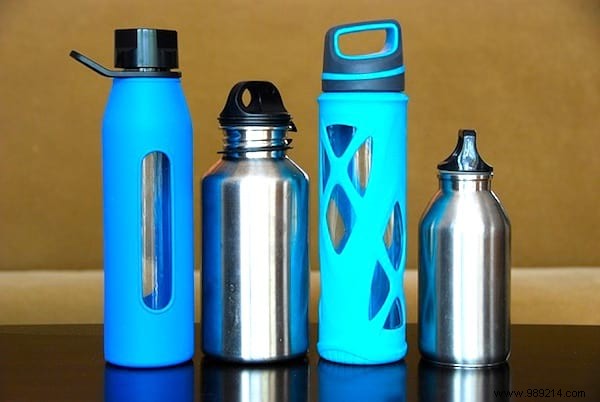
Instead of buying bottled water, use a good reusable water bottle .
Putting tap water in a water bottle is so simple and more economical.
There are different models of water bottles, including stainless steel water bottles or glass water bottles.
Tip: take the time to choose a water bottle that you really like , because you will be more likely to adopt it permanently!

Instead of drinking your coffee from a tumbler with a single-use plastic lid, use a stainless steel thermos, like this one.
Not only you reduce your plastic waste , but in addition it costs much less!
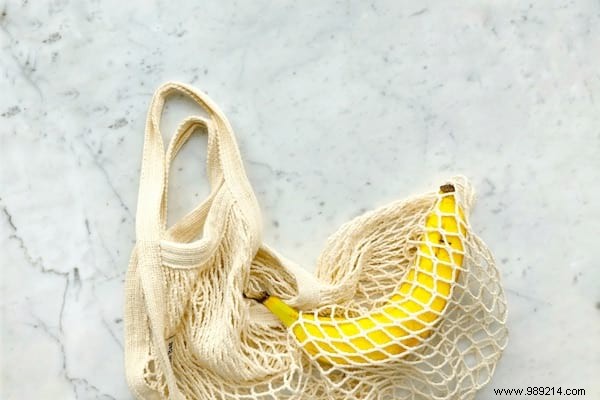
To say no to plastic bags, you can:
- use reusable tote bags. Very light and not bulky, reusable fabric bags are always useful, and make it possible to avoid plastic bags.
- use paper bags. If your supermarket offers it, ask for paper bags which have the advantage of being recyclable.
Are you doing your shopping, but you forgot your reusable bags at home? It happens…
So, a little advice:remember to always keep 1 or 2 reusable fabric bags in your bag.

There are several reusable alternatives plastic straws for kids:
- glass straws,
- stainless steel straws and
- bamboo straws.
And if we assume that you are over 4 years old, you can also drink directly from the glass, without a straw!
So, when you go out, remember to ask the server not to use a straw in your drink.
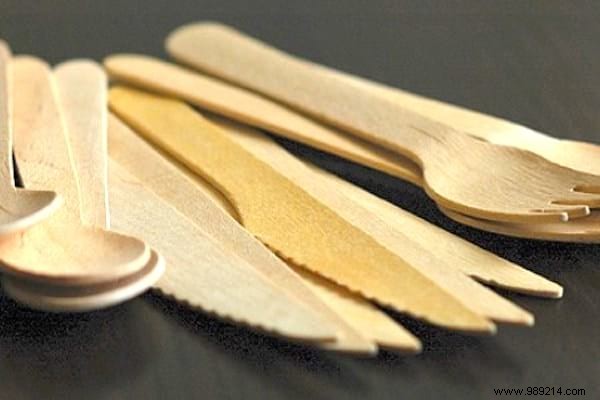
To say no to plastic cutlery , There is nothing more simple. Just slip real metal cutlery into your bag.
If you absolutely must have disposable cutlery, use these disposable wooden cutlery or even these compostable cutlery.
And let's not forget the option of chopsticks which are easily transportable and reusable.

Instead of using plastic trash bags, you can use:
- paper bags from the supermarket,
- compostable garbage bags made from plant materials or
- do not use garbage bags at all! This last option is not as gross as it sounds…
Indeed, the majority of trash cans are very easy to clean. Simply rinse them with water after emptying them.
If your trash is starting to really smell bad, you can use this trick.
And if you have a compost bin, then you'll have very little gross litter littering the bin.
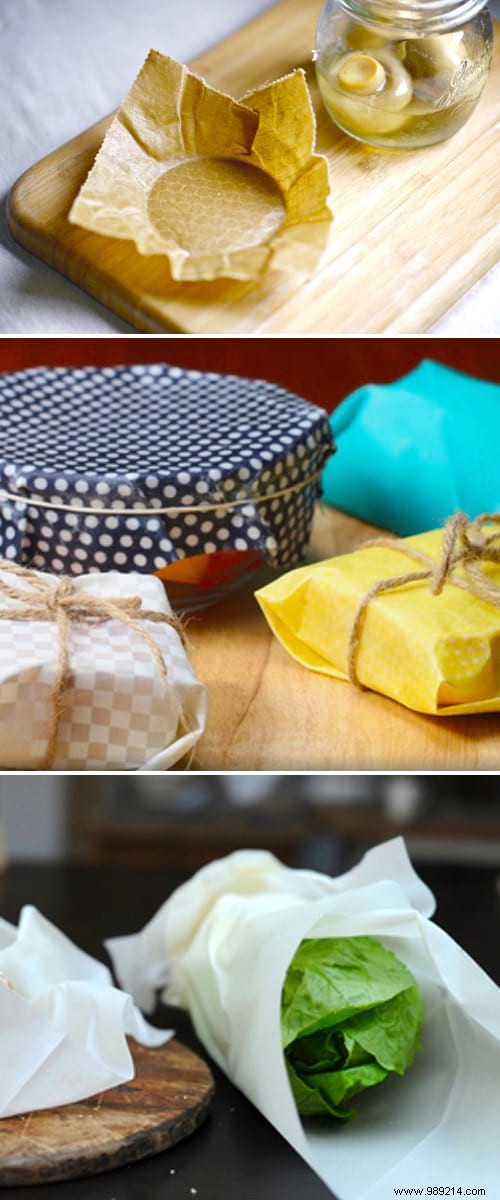
Cling film, also called stretch film, is very practical for storing food.
The problem is that it's also plastic!
The solution ? Use these beeswax food wraps, which are reusable AND biodegradable .
These amazing wraps are made using organic cotton, sustainably harvested beeswax, organic jojoba oil and tree resin.
You can use them to replace cling film, but also zip lock freezer bags.
We use them all the time! To preserve food, cover a bowl or even wrap a sandwich.
You can even make your own washable, biodegradable cling film. It's easy, the tutorial is here.

To replace plastic snack bags, try these reusable snack bags.
And if this option does not suit you, wrap your sandwiches the old-fashioned way, with biodegradable parchment paper.

Thanks to this stainless steel ice cube tray, no more plastic residues in your cold drinks!
If this speaks to you, know that the same solution exists for ice cream moulds. Yum!

Stop buying food sold in plastic containers.
Opt instead for food sold in glass jars , with a metal lid.
Once the food is consumed, do not throw away the jars.
Just wash them under water to reuse them. You get a free and eco-friendly storage to keep your food :-)
To discover: 43 Clever Ways to Use Old Glass Jars.
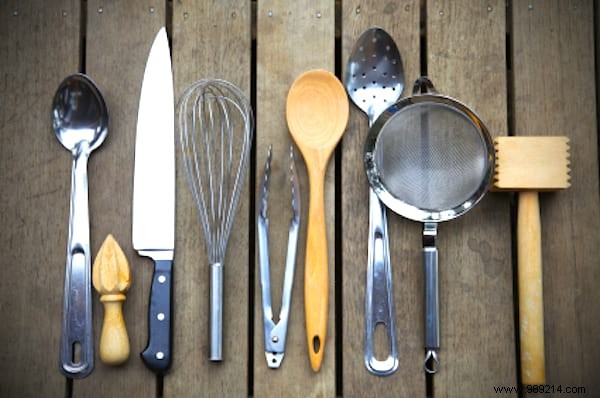
Anyway, plastic utensils are very fragile and have a very short lifespan...
The plastic-free alternative is simple and more durable!
Just use kitchen utensils made of wood, bamboo or stainless steel.

To avoid plastic bottles of liquid detergent, buy powder detergent instead.
In fact, powder detergents are sold in cardboard boxes, which are easily recyclable.
In addition, washing powder is much more profitable , because it contains only laundry. Yes, be aware that liquid detergents are composed of 80% water!
Or even better:make your own washing powder .
Homemade washing powder is not only ultra-efficient, but also easy to make. It's here for the recipe.
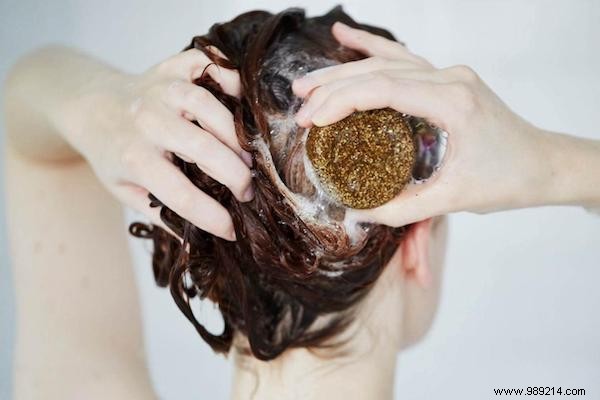
All personal hygiene products sold in disposable plastic bottles are an aberration...
These products produce a lot of waste and not any added value .
Indeed, all these products exist in solid forms. They are even more effective and moreover cost less!
You can find bar shampoo here for less than 3€, bar soap here.
And even better, you can make your own cosmetics without using plastic.
Here are the 3 homemade recipes that everyone should know:
- homemade shampoo recipe
- homemade shower gel recipe
- homemade soap recipe
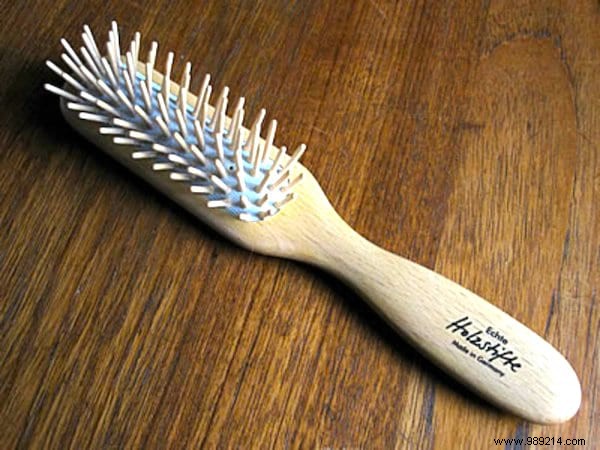
Do you have plastic combs and brushes? Then you can put them in the recycling bin!
To live plastic-free, use a 100% natural hair comb and brush.
I use this brush with wooden pins, and I can tell you that it works wonderfully.
It looks like a cross between a comb and a brush.
The "bristles" are made of wood, and they detangle my hair perfectly, while massaging the scalp.
It feels so good!

Instead of throwing away your toothbrush as soon as it's damaged, use this toothbrush with rechargeable head .
You can also try the biodegradable bamboo toothbrush... and compost it when it's damaged!

To put an end to disposable razors forever, use an electric razor , like this one.
And for those who want to shave the old fashioned way, use a safety razor with replaceable blades.
Either way, it's way more economical than buying disposable razors every four mornings.

Did you know that every second 635 disposable diapers are used on babies around the world?
A child will have used no less than 8,000 diapers before you even start potty training!
From birth until the child is 3 years old, the disposable diaper budget can be up to €1,500.
Most importantly, disposable diapers add to the tons of plastic dumped in landfills.
The ecological and economical solution? Washable diapers. They cost half as much as disposable diapers and are reusable for years .
In addition, disposable diapers contain toxic products that are dangerous for baby's health.
Well, it's true that it's a little more restrictive, but it's worth making the effort for the baby's future, isn't it?
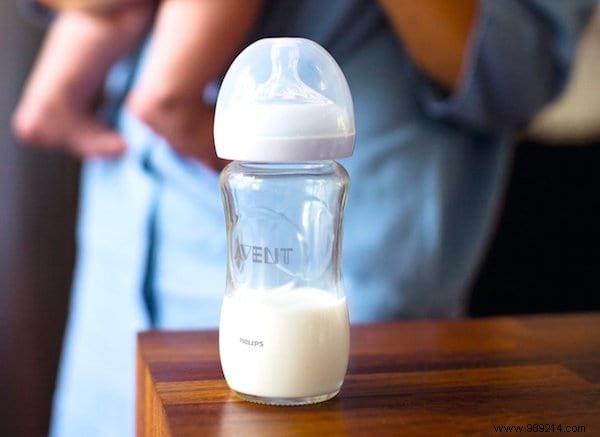
Makes sense, because plastic bottles contain many chemicals that should NEVER end up in baby's mouth!
Yes, even BPA-free bottles…
To avoid this, the plastic-free solution is simple:replace them with stainless steel bottles or glass bottles.
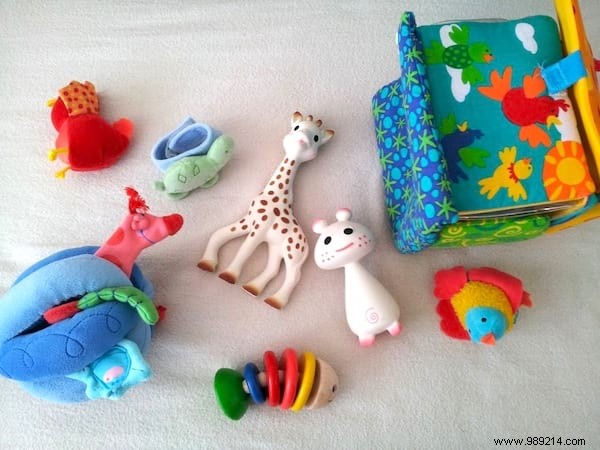
Instead, choose cloth toys , natural rubber (like Sophie la girafe) or wood.
The little extra? These natural alternatives will wear out less quickly and are easily washable.

At home, I am the one who prepares the children's lunch.
And I can tell you that it is rare to find a food box that is both waterproof AND plastic-free.
To pack the children's lunch, I use these metal food boxes . Thanks to their silicone cover, they are totally waterproof.
They are just perfect for adding fresh fruits and vegetables to children's lunches :-) No more individual snacks in plastic packaging!
And I can tell you that these stainless steel food boxes have been subjected to one of the most rigorous evaluations:my children! The verdict:they work wonderfully :-)
To store your food without plastic food boxes, you can also use:
- glass food containers or
- stainless steel bowls with lids.
Note: to avoid a leak, I advise you to use food containers with a silicone lid or with an airtight seal.
Less toxic products and great savings , do you like it?
Then we recommend this excellent book:Zero waste family, Ze paperback guide by Jérémie Pichon and Bénédicte Moret, with a preface by Nicolas Hulot.
It contains hundreds of simple and practical tips to reduce your daily waste.
